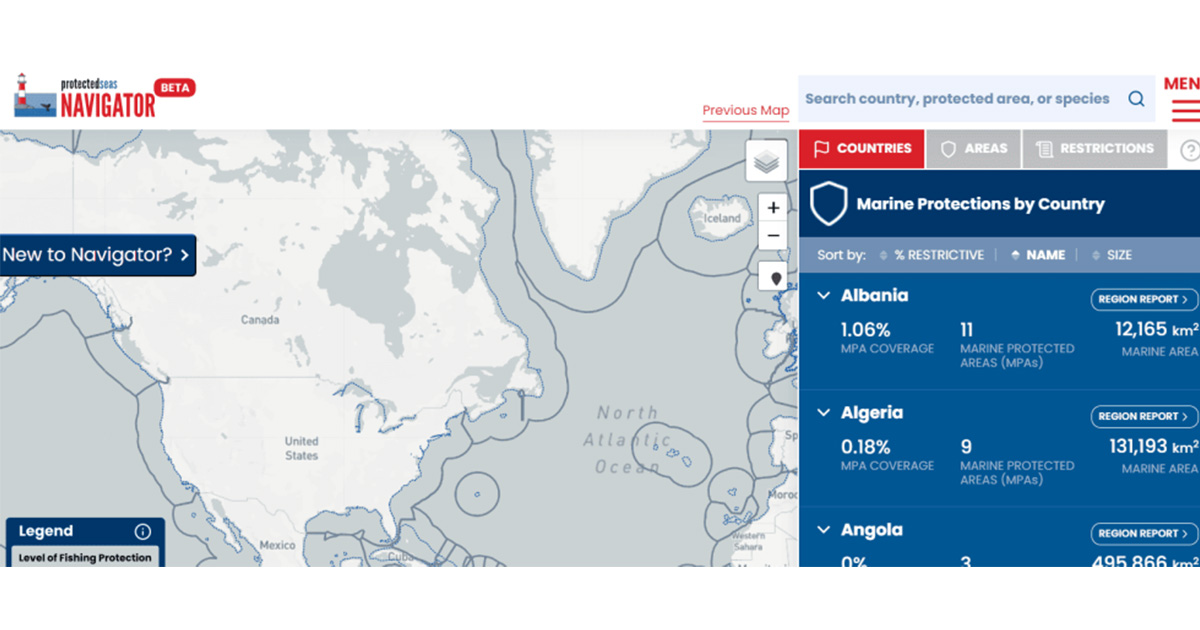The first global map of the world’s marine life regulations and their boundaries is now available. Navigator is a free, interactive map of over 21,000 marine protected and managed areas across 220 countries and territories and in over 25 languages.
Navigator offers a global view of marine life protections to help inform progress towards international conservation goals, including protecting 30 percent of the global ocean by 2030, which was adopted at the UN Biodiversity Conference in Montreal, Canada, known as COP15.
“Navigator brings together independently-verified regulatory information for over 21,000 marine protected areas into one interactive map as a first step toward understanding where current marine protections exist,” said Virgil Zetterlind, Director of ProtectedSeas. “We created this one-of-a-kind tool to assist international ocean conservation planning and assessment.”
In addition to a comprehensive inventory of marine protected areas (MPAs), the Navigator map includes other marine managed areas such as water protection areas, speed-limit zones to protect marine mammals, fisheries management areas, and other effective areas-based conservation measures, or OECMs.
The Navigator team scoured the globe to compile all marine protection information in the global database for marine protected areas (MPAs) large and small—including the 0.03 square kilometers (0.02 square miles) Batalang Bato Marine Sanctuary in the Philippines—the smallest MPA in the world—where the only known regulatory information was posted on a sign at the site.
The work involved creating the first digital maps for over 2,400 of areas—or roughly 10 percent of the areas—that were previously only detailed on paper. Over 42-person years went into developing this comprehensive database of marine life protections.
The ProtectedSeas team also created a system to evaluate an area’s level of protection from fishing where each area is assigned a Level of Fishing Protection (LFP) score based on an analysis of restrictions on marine life extraction.
The culmination of eight years of research and development, this open-access tool provides scientists, decision-makers, and the conservation community with regulatory information on the world’s marine protected areas to support global MPA analysis, design and management.
An analysis of Navigator data shows that 3.4 percent of the global ocean is highly protected from fishing based on the ProtectedSeas' LFP scoring system. On a country level, Palau has the highest percentage of marine area—79 percent—protected from fishing.
Detailed county- and area-level reports can be viewed and downloaded in Navigator for all marine protected and other managed areas to analyze legal protections relative to species, habitats, and other factors to identify potential gaps and inform new protections.
The Navigator tool will be showcased during a webinar on Wednesday, June 21 at 10:00 AM PDT. Register for the webinar here.
“Many areas we had to map were tough—from digitizing complex boundaries that followed coastlines and excluded islands to following connect-the-dots style descriptions to understand the regulations and boundaries,” said Zetterlind.



